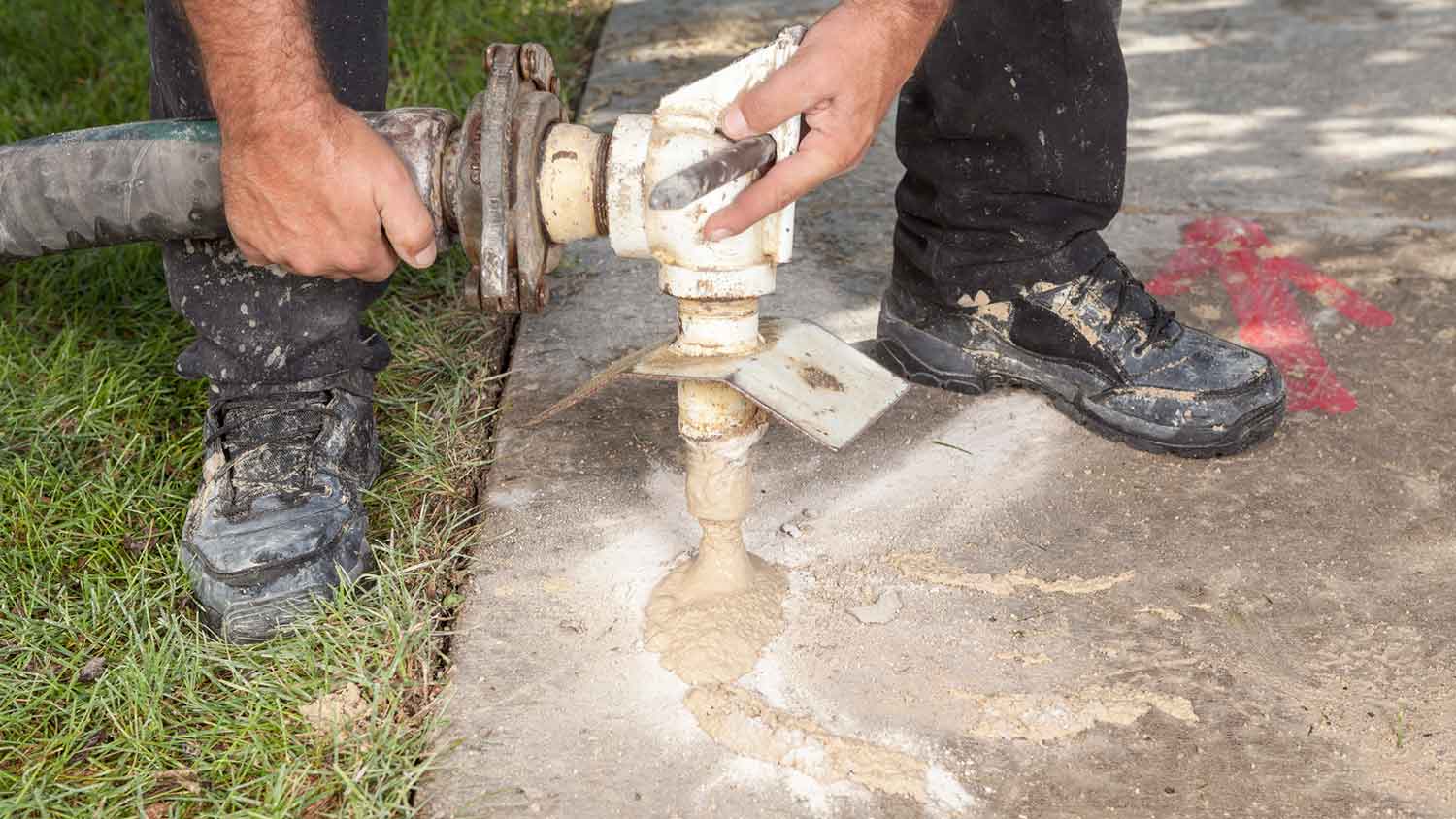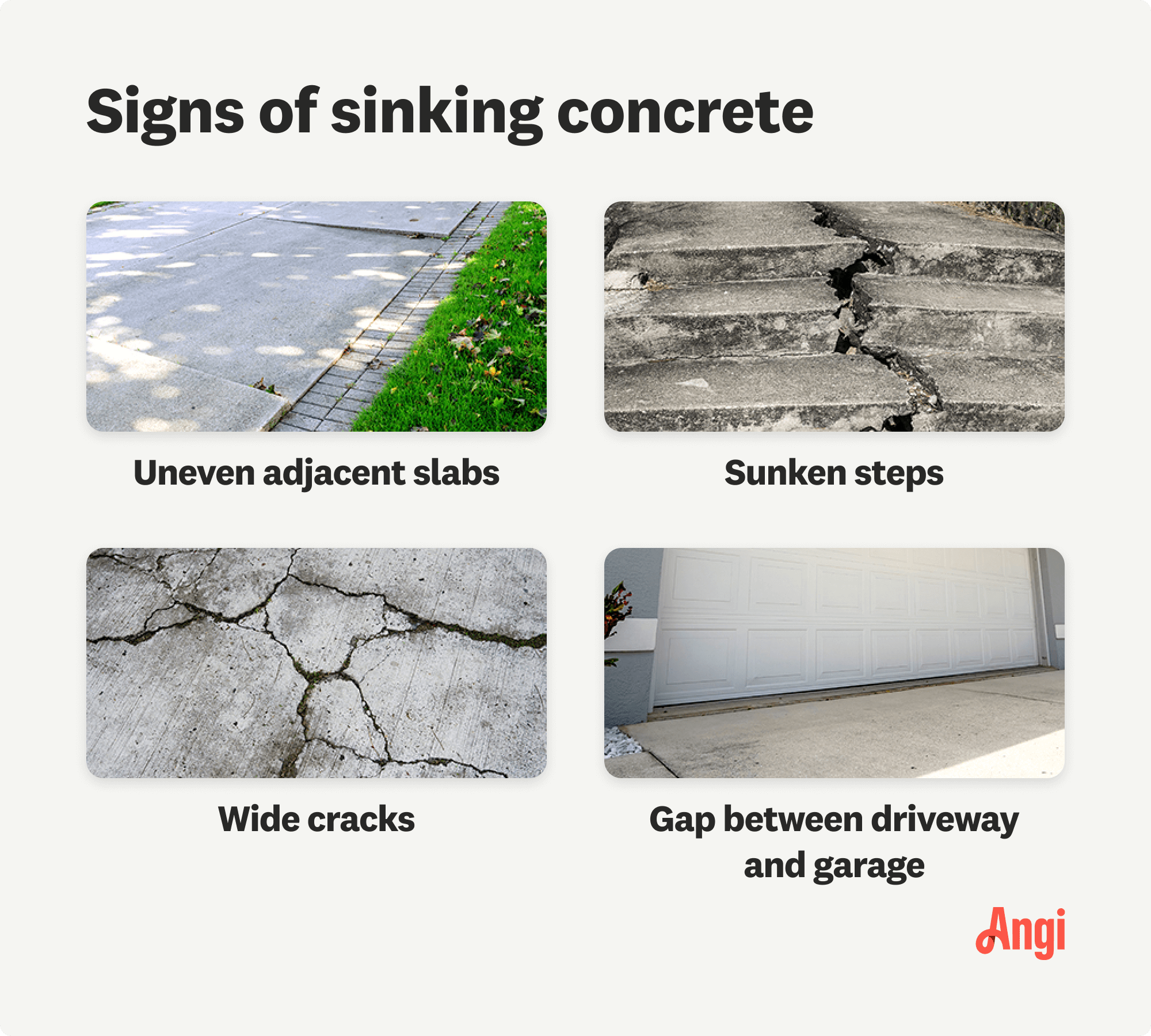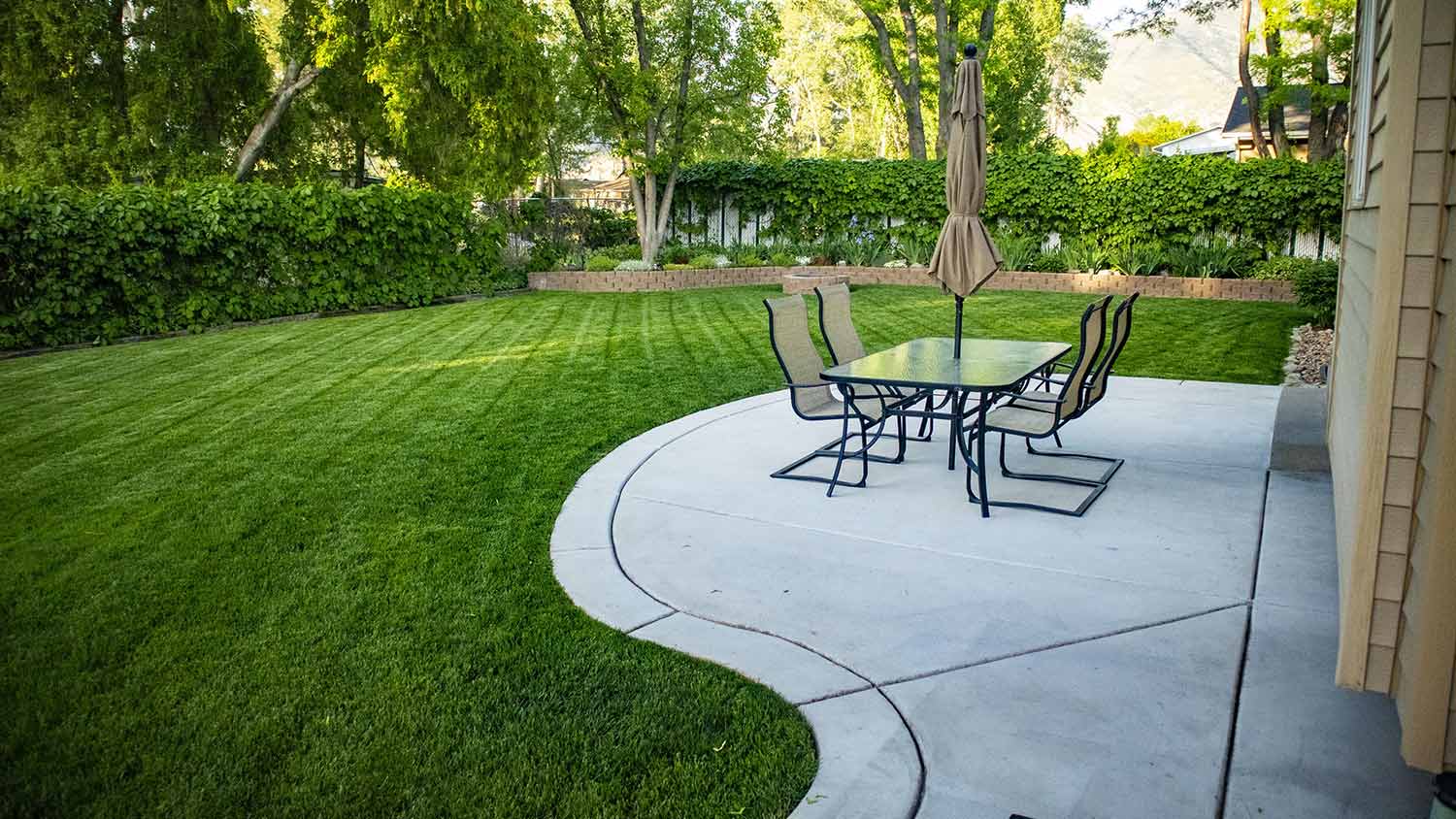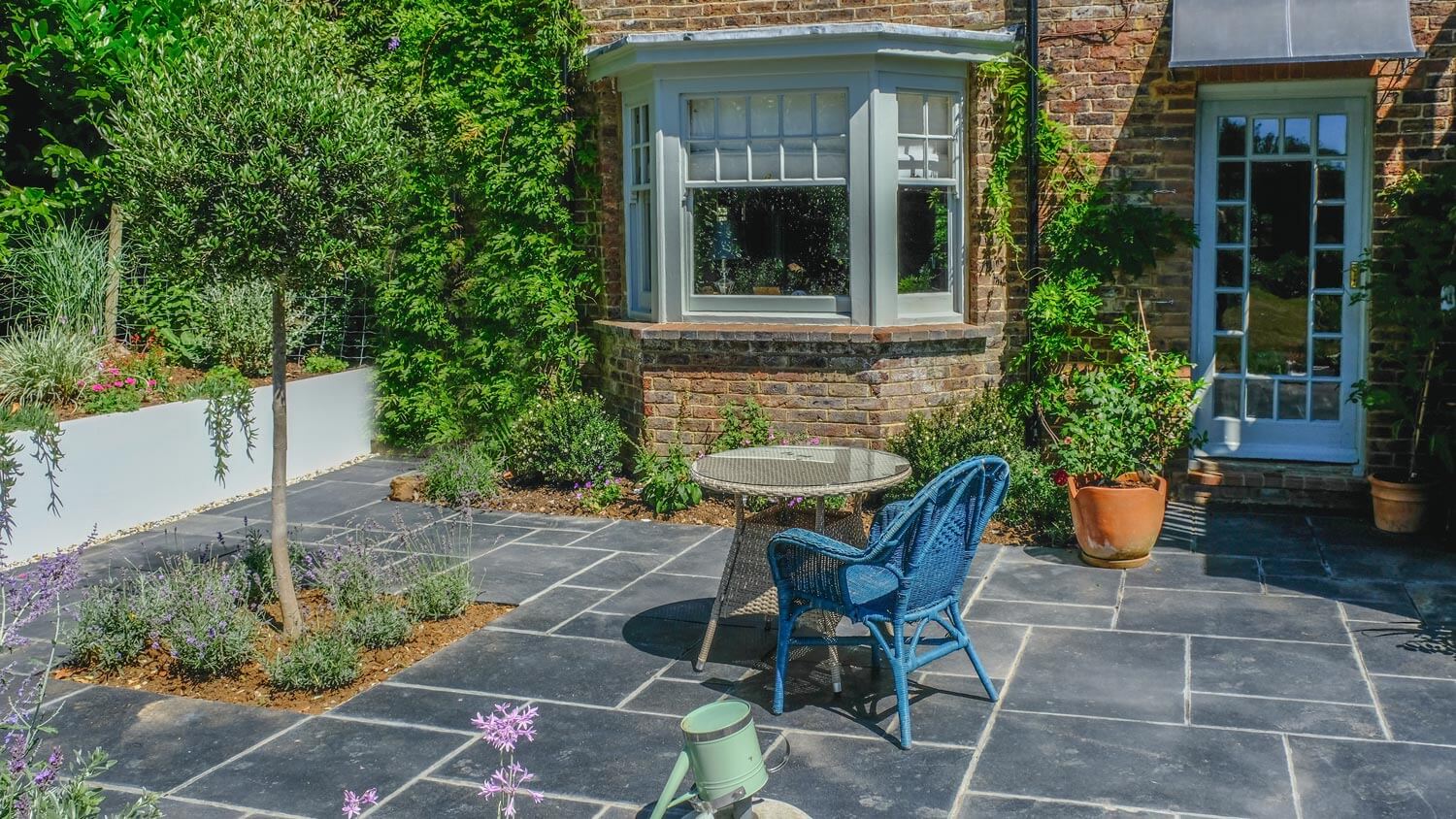
Wondering about mudjacking costs? Discover prices, key cost factors, and tips to save on your concrete leveling project.
Level your uneven, sunken, or settled concrete with this cost-effective fix


Mudjacking is a method of leveling uneven concrete driveways, patios, steps, and more.
This process is best performed by professionals with specialized equipment.
Mudjacking costs an average of $3 to $6 per square foot.
Severely damaged slabs may require replacement instead.
If you’ve noticed that your driveway is sinking, your concrete steps are pulling away from the house, or one of your walkway slabs is lower than the rest, you might think you need to replace the concrete. Mudjacking is a budget-friendly and quick way to avoid a full replacement and return your concrete back to its original level. Learn how mudjacking works, its pros and cons, and what signs to look for to tell if it’s time to hire a pro to mudjack your concrete.
Mudjacking is one of the most effective concrete repair methods because it can be completed in just a few hours. Experienced homeowners with access to hydraulic pumping equipment can also DIY mudjacking with the right tools and supplies, to save some money.
Mudjacking is a concrete leveling method to lift asphalt slabs in sidewalks, patios, and driveways. The mudjacking process involves pumping cement slurry—often a mix of sand, water, and cement—under the slab through a hole to lift it back up to its original height. This specialized process should be completed by a mudjacking and concrete leveling professional.
When taking on this project, expect questions only a pro can answer. With our network of local pros, you'll get the job done and your questions answered—without the hassle and stress of doing it yourself.

Mudjacking is a straightforward process to level concrete that a mudjacking pro can complete in only a few hours. First, they’ll drill the slab with holes that are approximately 1 5/8 inches in diameter and four to six feet apart. Next, they’ll use a hydraulic pump to inject a premixed cement slurry into the holes. The slurry will fill the voids and holes below the surface and lift the concrete until it’s level.
Once the concrete has lifted to the correct level, the pro will fill the holes and caulk any cracks in the slab to prevent water intrusion. You’ll need to wait about 24 hours for the material to cure before the slab is ready for regular use.
Not sure if your concrete needs to be mudjacked? A few key signs can indicate it’s time to bring in the pros and level your concrete.
Cracks in concrete surfaces that are more than 1/4 of an inch wide
Concrete that rocks or shifts when weight is applied
Porches, decks, or steps that are pulling away from your home
Gaps or height differences between slabs
Water pooling on concrete surfaces
Soil erosion around concrete slabs


Although mudjacking can be a great solution for your concrete and asphalt problems, it also has some drawbacks. If you’re considering mudjacking, it’s essential to learn its pros and cons in order to make an educated decision.
Cost-effective: Mudjacking is relatively inexpensive when compared to other ways of replacing concrete slabs, which require heavy and expensive equipment and plenty of labor hours.
Durable: Mudjacking is a permanent fix. The injected slurry won’t absorb water or expand, which means you shouldn’t have to worry about sinking slabs in the future.
Versatile: Mudjacking can fix a variety of cracked and uneven surfaces, plus it can also be done at any time of the year, regardless of the weather conditions.
A quick repair: This technique is faster than other options— where contractors often have to break up the concrete before replacing it. Generally, you can use the surface the day after the repair instead of waiting weeks for the freshly poured surface to dry.
Sustainable materials: The slurry injected under the concrete uses a sustainable mix of water, sand, and cement.
Possible cracking: If the job isn’t completed properly, then cracking could occur. An experienced contractor will use the proper thickness of slurry, which will reduce the chance of breaking the slab.
Not suitable for shifting soils: If the ground is shifting to the point that it can’t support a slab, adding heavy cement won’t solve the problem. In this case, we recommend polyurethane foam injection instead of cement to raise sunken slabs.
Doesn’t fix a damaged slab: Mudjacking won’t help for a severely damaged slab. In this case, replacing the slab will be a better option.
Could compromise the structural integrity: A professional contractor will assess the situation, but in some cases, if the damage is too close to the house, mudjacking could negatively impact the house’s structure.
Mudjacking is considered one of the most affordable techniques to repair concrete or asphalt compared to other methods. Mudjacking will cost almost a third to half the price of other traditional repairs or replacements.
Expect to pay between $570 and $1,500 for the average mudjacking job. However, the extent of the damage will affect the final price. That's why we recommend repairing any concrete or asphalt damage quickly to avoid a hefty price tag.
The smooth results of mudjacking can last for many years, even decades. It should not settle or deteriorate over time.
However, if the soil underneath the slab is not 100% compact, cracking may happen again. If it does, the slabs can be lifted back into place using the same method. Check with your contractor about whether they offer a warranty.
Mudjacking is a long-lasting, reliable solution to sunken or settled concrete when performed by a concrete leveling professional. It is more budget-friendly than other forms of concrete leveling like polyjacking, with the cost of mudjacking averaging $3 to $6 per square foot compared to $5 to $25 per square foot for polyjacking. Mudjacking is also an easier and more affordable fix than replacing a damaged or sunken slab.
Other kinds of concrete leveling are available, including sandjacking, slabjacking, and polyjacking, all of which use different materials to fill voids below the surface and lift concrete. These methods vary in cost and effectiveness, and different methods may be more appropriate for different types and sizes of concrete slabs as well as for the reasons they need leveling.
In some cases, fully replacing a slab is a better alternative to mudjacking if the slab itself is too damaged to be leveled. Once the structural integrity of the slab itself has been compromised, replacement is the only way to ensure future stability and durability.
From average costs to expert advice, get all the answers you need to get your job done.

Wondering about mudjacking costs? Discover prices, key cost factors, and tips to save on your concrete leveling project.

Don’t let sinking concrete capsize your budget. Learn about concrete leveling costs and the available methods to plan ahead for your project.

A driveway that’s too steep can be a major inconvenience. We’ve compiled some of the best steep driveway solutions in this comprehensive guide.

Wondering who to hire to finish, overlay, or color concrete? See why a decorative concrete contractor is the right choice and how pros deliver lasting results.

Sunken concrete can be a structural issue, but a professional can easily repair it. Ask these concrete injection leveling and mudjacking questions before you hire.

Mudjacking is a common method for leveling concrete. Learn how long mudjacking lasts and what factors contribute to its lifespan.